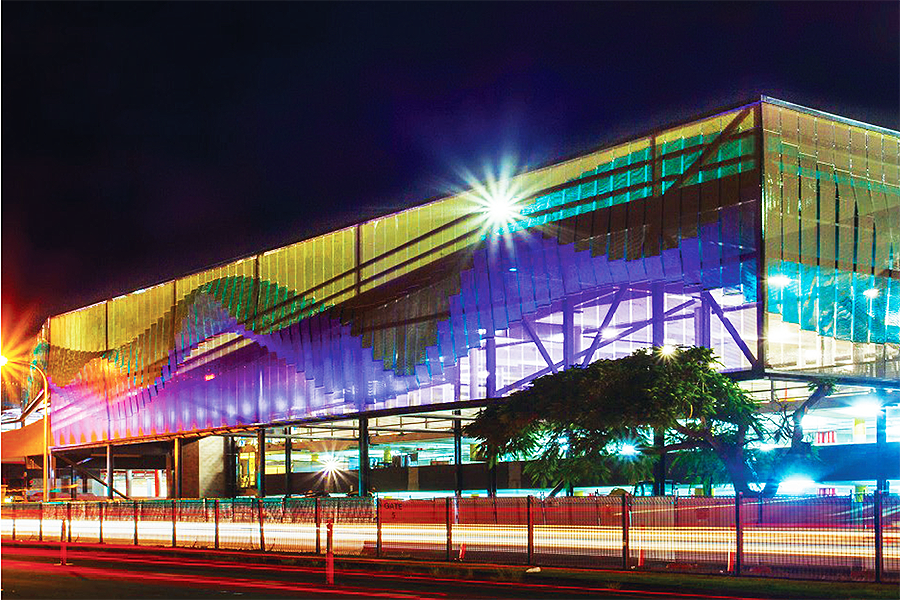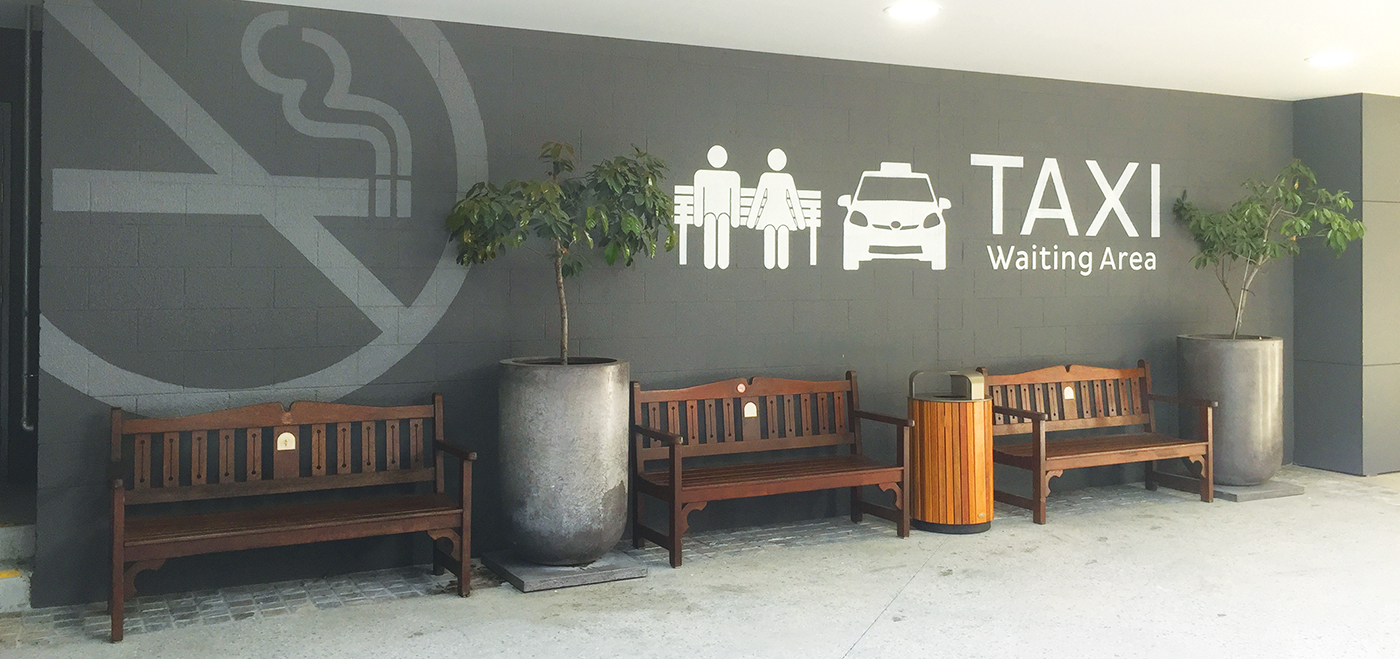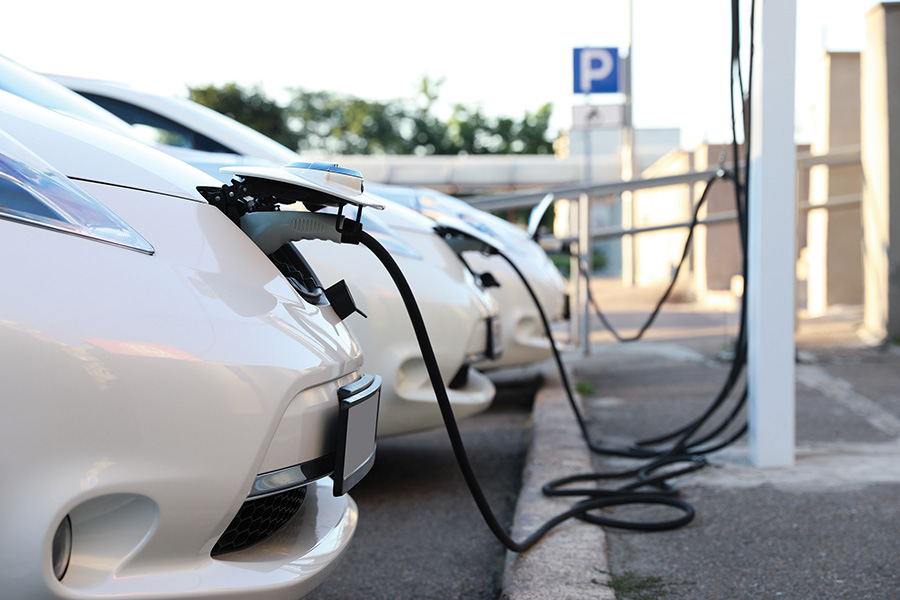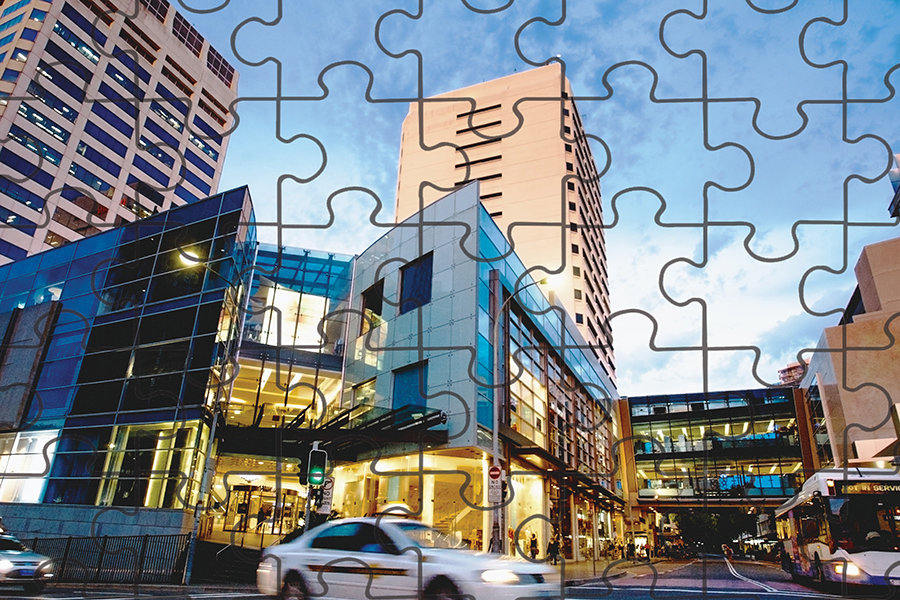You get only one chance to make a ‘first impression’ and in our business, it’s the car park! Get it wrong and you lose business; get it right and you gain customer loyalty. Car parks are beginning to gain as much attention by centre owners, managers and designers as is the mall; with new parking guidance systems, friendlier areas and car finding technology, the car park is moving to another dimension.
Until recently the shopping centre car park has been viewed as a back-of-house area that has had little design thought or embellishment. Traditionally in the domains of the traffic engineer and planner, car parks have been viewed primarily as utilitarian spaces with a relatively fixed purpose.
All of us have experienced the frustration of poorly designed car parks with low lighting, low ceilings, confusing navigation, ill-conceived signage, tight corners, a sea of columns and troublesome ingress and egress. The reality is that, for most visitors to a suburban shopping centre, the car park is the first point of entry and brand touchpoint. Get the car park wrong and visitors will go elsewhere. Conversely, get the car park right and you will have a friend forever.
Car park design is now being viewed as a most important element in the design of new and refurbished centres and as a key component of the user journey and customer experience. There are now awards for the world’s coolest car parks, with notable finalists such as Car Park Plaza in Cajnovas, Spain, the ‘Cheese Grater’ in Sheffield, UK and Eureka Tower, Melbourne.
With the advent of parking guidance systems, including frictionless parking, find-your-car technology and end-of-trip facilities, car parks are now receiving front-of-house budgets and attention.
Improving the car park experience
Car park safety, convenience, ease of use and cleanliness are high on the list of attributes sought after by users. There are some simple and cost effective ways to improve the car park experience.
At the top of the list would be lighting and painting, improved accessibility and equitability of use, and clear signage and visual communication. Retrofitting an existing facility with parking guidance is a more expensive option that is fast becoming an expected inclusion.
Integrated customer journey
The user journey to a shopping centre starts off-site and often involves reviewing other communication channels such as the centre or retailer website. The journey itself may involve the use of Google maps and will certainly encompass en-route road signage. A consistent customer journey will ensure that all language, symbols, colour coding, map design and ‘best for’ parking information is consistently represented. Once inside the centre it is critical for all language to be consistently presented across other touch points such as directory kiosks, brochures and signs so that users can easily find their back to the ticket machines, correct car park level and space.
Start from the outside
Car parks themselves need not look boring from the outside. The car park structure at Brisbane Airport is a case in point. Adorned with over 250,000 hinged aluminium panels that sway in the breeze, the kinetic façade called Turbulent Line was designed by American artist Ned Kahn. As wind animates the 5,000m2 façade, the image moves and shimmers to create a moving art installation.
- Pacific Fair, Gold Coast
The car park façade on the newly developed Pacific Fair creates an architectural statement of its own with variable-coloured backlit LED lighting. The architectural features themselves help users firstly to identify and secondly to navigate the car park zones and entries.
Technology
Parking guidance is continually developing as it strives to help asset managers provide a seamless and stress-free customer experience. A survey by Insurance.com revealed that 52% of parkers admitted instances of forgetting where they parked.*
Frictionless parking systems with license-plate recognition are available in conjunction with smartphone apps and touchscreen kiosks to help users find their car. The future will embrace smart dashboard guidance to empty or reserved spaces and readiness for driverless cars.
Behind the technology system lies the ability for owners to review the performance of the system, analyse data and maximise efficiency.
Being personable
Technology and efficiency need not however be the sole attributes of a good car park experience. Introducing an element of humanity via clever, fun and friendly graphics lifts the overall customer experience.
Pacific Fair uses large-scale friendly arrival and departure messages to provide warmth. The restrooms also receive specific design attention that is directed at having fun and being personable.
The connection of the car park to the retail spaces is also a critical transition point for users. After all, car parks are not just designed for cars but also have a high level of pedestrian traffic. It is critical to consider the equitable use of cars and pedestrians through the design of accessible pedestrian walkways and connections.
The inclusion of end-of-trip and bike storage facilities is also a lifestyle benefit for the many staff that work in the centres. ISPT has recently launched its Fitpoint end-of-trip brand at premium office locations in Sydney and Brisbane and Mirvac has introduced a new end-of-trip facility annexed to the car park in its recently refurbished Broadway shopping centre.
Contemporary shopping centre design has now embraced the parking experience as a critical element of the property’s overall brand positioning. Placing the parking needs of the visitor at the top of the design equation will result in an elevated first impression that sets the expectation for the rest of the visit.
*Insurance.com 2014 survey of 2,000 drivers (parkassist.com).





















